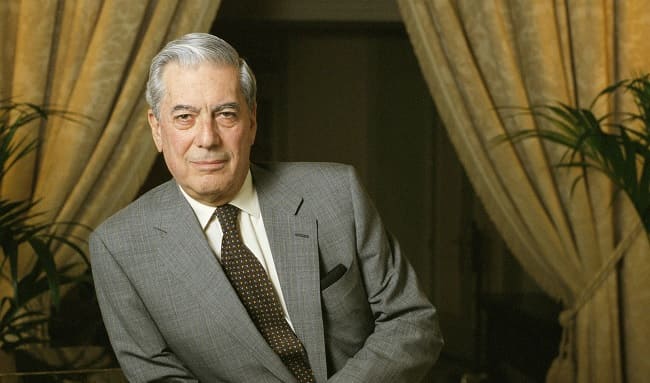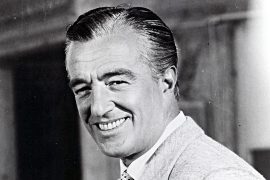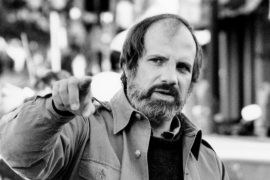Who is Mario Vargas Llosa short summary?
(Arequipa, Peru, March 28, 1936). Peruvian writer, politician and journalist. Nobel Prize for Literature 2010. He spends his childhood between Bolivia and Peru and when he finishes his primary studies he collaborates in the newspapers La Crónica and La Industria.
What did Mario Vargas Llosa do for Peru?
Vargas Llosa was born in Arequipa (Peru) in 1936. Within his vast legacy he has written books of stories, novels, studies, essays, works for theater and cinema, among which are: “The city and the dogs”; “The puppies”; “Pantaleon and the visitors”; “The war of the end of the world”, among others.
What is the most important work of Mario Vargas Llosa?
The city and the Dogs.
Who is Mario Vargas Llosa books?
Peruvian author, politician and essayist, Mario Vargas Llosa is considered one of the great authors of the 20th century, fundamental for Spanish letters and a prominent member of the Latin American boom. His work has been recognized worldwide with awards as important as the Nobel Prize for Literature.
What is the shortest novel by Mario Vargas Llosa?
‘Five corners’, by Mario Vargas Llosa.
What happened to Mario Vargas Llosa?
Mario Vargas Llosa remains hospitalized in Madrid after testing positive for COVID-19. The Nobel Prize for Literature Mario Vargas Llosa, 86, was hospitalized after testing positive for COVID-19. Morgana, his daughter, published a brief statement about the writer’s health.
What is the fortune of Mario Vargas Llosa?
Mario Vargas Llosa: 500 thousand dollars.
Where does Mario Vargas Llosa live now?
Mario Vargas Llosa has been living in his central Madrid house for two weeks. Yes, we say “has been” because, after announcing it exclusively for SEMANA, the Nobel Prize winner returned this Thursday to Isabel Preysler’s Puerta de Hierro mansion.
Where is Mario Vargas Llosa currently?
Mario Vargas Llosa is recovering favorably after hospitalization in Madrid for COVID-19. The Spanish-Peruvian Nobel laureate in literature Mario Vargas Llosa is admitted to a Madrid clinic for complications related to the coronavirus.
Which play won the 2010 Nobel Prize for Literature?
The next novel by Vargas Llosa, “The Celt’s Dream”, will be published next November. The impact of a prize like the Nobel on the work of an author like Vargas Llosa, the eternal candidate, is enormous.
What was Mario Vargas Llosa’s satirical novel?
Pantaleón and the visitors: the global satire of Mario Vargas Llosa.
What does Mario Vargas Llosa express in his works?
What should be emphasized in Mario Vargas Llosa’s novels on the political subject is that they are all very critical of Peruvian institutions, mainly of the institutions that represent authority (the Army and the Church, in particular).
What characteristics do the works of Mario Vargas Llosa have?
Vargas Llosa’s narrative offers a carefree appearance towards the external forms of his literary creation, be it personal or general. All this happens because the real battle of the book is fought there, where two attitudes towards reality and man are found to be antagonistic.
What kind of literature is Mario Vargas Llosa?
He was born in Arequipa (Peru) on March 28, 1936. He has been defined as the most complete narrator of his generation and one of the best representatives of Latin American literature. He is a prolific writer who practices various literary genres, including the novel, literary criticism, and journalism.
Who is the only Peruvian winner of a Nobel Prize?
However, there is a name that shines with its own light, even being awarded worldwide for the contribution it has made to the universal letter: we are talking about Mario Vargas Llosa, the Peruvian winner of a Nobel Prize for Literature.
What are the strengths of Mario Vargas Llosa?
His sensitivity, his technique, his inner beauty, his kindness, his kindness and honorability, his exquisite education, his generosity and dedication, are the axes of the articles that account for his enormous passage through the world of Hispanic letters.
What is the first work of Mario Vargas Llosa?
Thus, his father sent him to military school between 1950 and 1952, which was a terrible experience for Mario, about which he spoke in his first novel The City and the Dogs.
What happened to Mario Vargas Llosa in 1990 in Peru?
He was a candidate for the presidency of Peru in the 1990 elections for the center-right Democratic Front political coalition. He lost the election in the second round against the candidate of Cambio 90, Alberto Fujimori.
How many books has Mario Vargas Llosa sold?
There he created 5,000 novels of which 400 million copies were sold. The critics, with few exceptions, considered her work as minor but her numbers have always been on the author’s side.
What motivated Mario Vargas Llosa to be a writer?
Vargas Llosa indicated that the years at school allowed him to learn about the social reality of Peru, from which he lived isolated, and obtain the information to start writing the novel in the fall of 1958, in Madrid (Spain), and finish it in an attic in Paris (France) in 1961.
How did Mario Vargas Llosa influence the Latin American boom?
For the author of “La fiesta del Chivo”, one of the achievements of the “boom” was “to change the stereotype that “Latin America only produced dictators or guerrillas” and that it was a barbaric world that was behind the culture.
What is the best-selling novel by Mario Vargas Llosa?
The city and the Dogs.
How to start reading Mario Vargas Llosa?
Asked about it, Agustín Prado, professor of Literature at the San Marcos Faculty of Letters, recommends that readers start with two stories to “enter the Mario Vargas Llosa universe”: ‘El Desafío’ and ‘Día Domingo’, published in Los bosses (1959), his first book.
What is the name of Mario Vargas Llosa’s latest book?
Mario Vargas Llosa presented his latest book, “The quiet gaze”
What work by Mario Vargas Llosa portrays the dictatorship of Manuel A Odría?
Vargas Llosa wrote “Conversation in the Cathedral” when he lived in Paris with the aim of “showing the effects of the dictatorship in the non-political life of Peru”, since the writer had lived his youth under the military dictatorship of Manuel Odría (1948- 1956).





